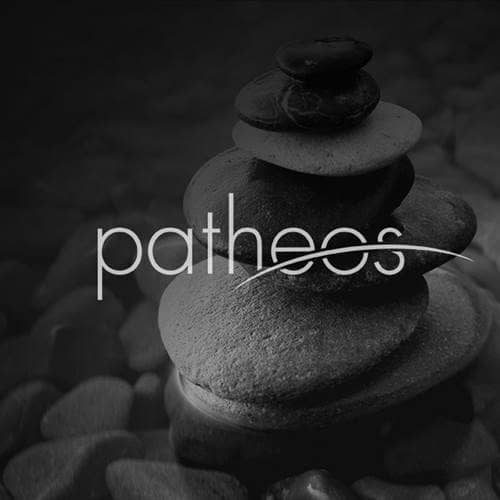- Trending:
- Pope Leo Xiv
- |
- Israel
- |
- Trump
- |
- Social Justice
- |
- Peace
- |
- Love

RELIGION LIBRARY
Zen
Founders
Bodhidharma (Chinese, Damo; Japanese, Daruma) is known as the first patriarch of Chan (Japanese, Zen) Buddhism, and, according to the Chan tradition, is the twenty-eighth patriarch of Indian Buddhism. According to late martial arts traditions, he also spent nine years at the Shaolin Monastery, where he created Shaolin kungfu. Bodhidharma is a figure of legend rather than history, but the fictive history of Bodhidharma is arguably more important, as it reveals more about how Chan understands itself and its beginnings.
This is not to say that there has been no interest in investigating Bodhidharma as a historical figure. While there is evidence that a Buddhist monk by the name of Bodhidharma lived in China around 520 C.E., there is no historical or textual evidence to indicate that this person was connected to Chan or to martial arts in any way. There is no correspondence between the little that is recorded about this particular Bodhidharma and the legend of the Chan patriarch.
The first known biography of Bodhidharma appeared in a text written in China in 645, and revised in 667, by the monk Daoxuan, who wrote a number of biographies of important Buddhist monks. There were some contradictions in this text, which was a compilation of sources; notably, the text stated that Daoxuan did not know where Bodhidharma died, but also stated that he died on the banks of the Lo River.
Some elements of the now well-known legend can be found in this biography. According to Daoxuan's text, Bodhidharma was a Brahmin from southern India who decided to travel to China to spread Mahayana Buddhism. He traveled to China by sea, rather than by the Silk Route, and landed initially in Nanyue, later traveling to the capital, Luoyang. By Daoxuan's account, Bodhidharma was not very successful in converting others to Buddhism, and in fact encountered quite a bit of hostility. He did acquire two disciples, one of whom was Huike, who was destined to be his successor and the second patriarch of Chan. To Huike he transmitted the Lankavatara Sutra, and his famous meditation technique, known as wall-gazing.
The legend continued to evolve over time, and was combined with stories about several other famous monks. One legendary claim that is essential to the Chan tradition is that Bodhidharma sat in meditation facing a wall for nine years without moving, and that eventually his legs fell off. Another is that he cut off his eyelids to prevent himself from falling asleep while meditating. Both incidents support the image of Bodhidharma as a demanding taskmaster who expected the same self-discipline and dedication of his disciples. His successor Huike was said to have cut his arm off to impress his teacher and prove his devotion to Buddhism.
Later, some characteristics of Taoist immortals were also attributed to Bodhidharma. For example, as immortals often do, he was said to have faked his own death, transforming an object to create the illusion of a corpse. After someone claimed to have seen him on his way back to India, his grave was opened and nothing was found there but a single straw sandal.
Known in Japan as Daruma, Bodhidharma first became popular within the Tendai Buddhist tradition. When Zen first emerged as a school independent of Tendai, it was known as the "Japanese school of Bodhidharma." In one Japanese legend, Bodhidharma, disguised as a beggar, had an encounter with the famed supporter of Japanese Buddhism, Prince Shotoku. Shotoku provided the beggar with food and water, and covered him with his coat. When he sent someone to check on the man, the report came back that the man had unfortunately died. Shotoku had the corpse buried, but began to suspect the beggar was no ordinary man. He had the grave opened, to find that nothing remained but the coat.
A very popular toy in Japan is The Daruma doll. It has no legs and a round base, and always rights itself when one tries to tip it over. The Daruma doll signifies good luck, safety, and prosperity. Paintings of Daruma by Zen painters are also well-known; in these he always has an intimidating appearance—prominent eyes with no lids, a scraggly beard and eyebrows, a huge bald head, and a fierce expression.
As is the case with Bodhidharma, little is known about the historical person Huineng. Even Shenhui, who was responsible for the argument that Huineng was Hongren's one legitimate successor, was unable to provide any biographical details for Huineng's epitaph. The few known facts are these: Huineng's name appeared on a list of the most important students of Hongren, the fifth patriarch of Chan. After his death, his family home in the far south of China was donated to the sangha for use as a temple.
Again, as with Bodhidharma, it is the legend of Huineng that is more important to the tradition. Whereas the legend of Bodhidharma developed over centuries, most of the legend of Huineng can be found in the Platform Sutra, which contains an account of his life and ascent to the position of sixth patriarch. The earliest known version of the sutra dates to around 780, approximately seventy years after his death. The Platform Sutra established Huineng's position as patriarch and also synthesized various teachings of the different groups that were precursors to Chan into a coherent Chan tradition.
Several core Chan ideas are expressed in the Platform Sutra's story of Huineng. One is that enlightenment can be transmitted directly, from one person to another, in an instant. The long and complex textual tradition of Buddhism was judged inferior to this "special transmission" of enlightenment. Another core idea is that anyone can become enlightened, regardless of education or training. Subsequently, Chan would continue to develop these ideas and express them in a variety of ways.
Study Questions:
1. Who was Bodhidharma?
2. Why is the fictive history of Bodhidharma more valuable to Zen practitioners than a scholarly biography?
3. How did Bodhidharma's meditation practices influence Zen?
4. What does the Platform Sutra offer to our understanding of Zen's origins?










